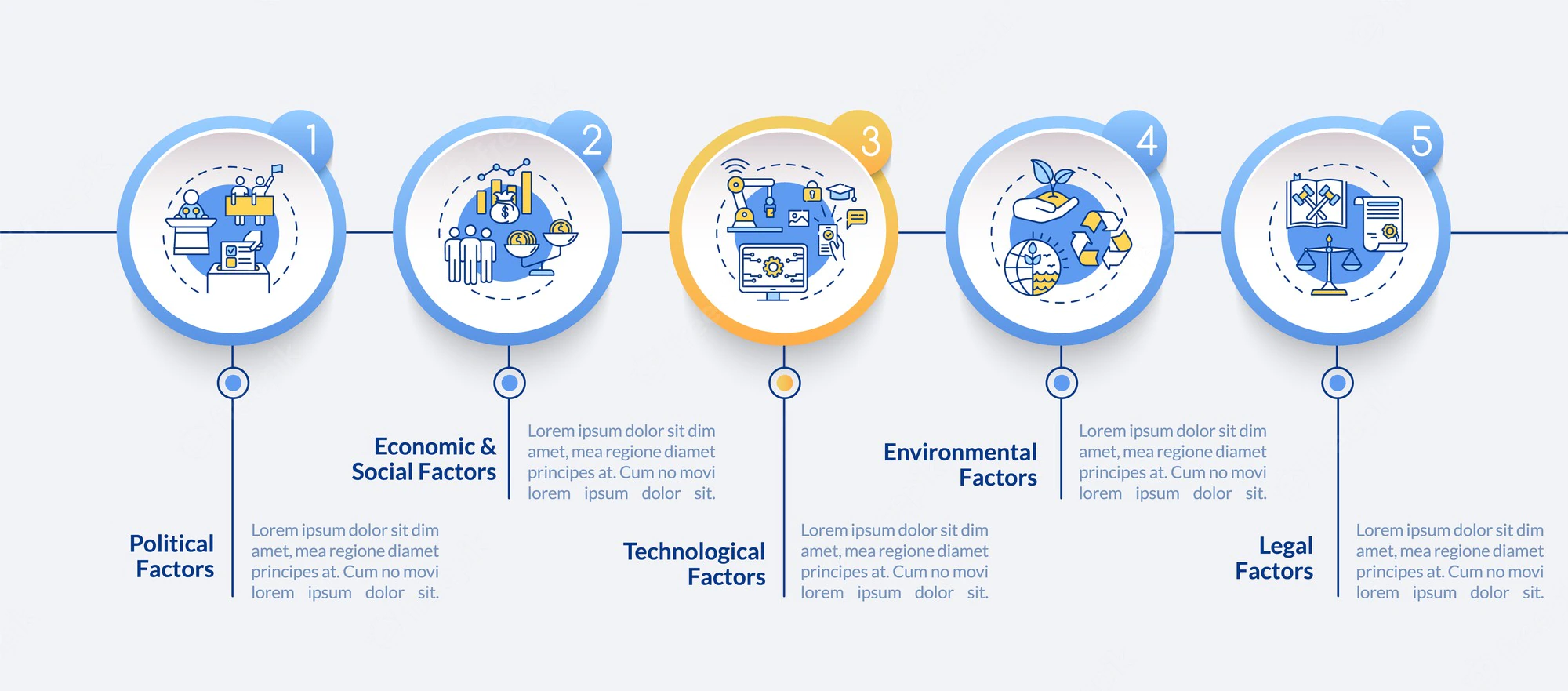Are you looking for a guide to help you write a winning PESTLE Analysis? Look no further! In this comprehensive guide, we’ll take you through the steps of writing a PESTLE Analysis, from understanding the components to structuring your document. We’ll also offer examples of PESTLE Analysis and provide tips on how to use a PESTLE Analysis in your academic writing. By the end of this guide, you’ll be equipped with the knowledge and skills to write a winning PESTLE Analysis!
What is a PESTLE Analysis?
A PESTLE Analysis is a strategic tool used to analyze an organization’s external environment. It helps organizations identify external factors that can impact their performance. The acronym PESTLE stands for Political, Economic, Social, Technological, Legal, and Environmental factors. These factors are typically analyzed from a macro perspective.
The PESTLE Analysis is a useful tool for organizations to understand their external environment and how it can affect their business. It can also be used to identify gaps and opportunities in the external environment. By understanding their external environment, organizations can make better decisions and develop effective strategies.
Benefits of a PESTLE Analysis
There are many benefits of using a PESTLE Analysis. It can help organizations identify opportunities and risks in the external environment. It can also help them make better decisions and develop effective strategies. Additionally, it can help organizations identify trends in the external environment that can affect their performance.
Furthermore, a PESTLE Analysis can help organizations identify potential threats to their performance. By understanding the external environment, organizations can develop strategies to mitigate these threats. Additionally, a PESTLE Analysis can help organizations identify potential areas for growth and expansion.
Finally, a PESTLE Analysis can help organizations develop an understanding of the external environment. This understanding can help organizations make informed decisions and develop effective strategies.
Steps for Writing a PESTLE Analysis
Writing a PESTLE Analysis can seem intimidating, but it doesn’t have to be. Here are the steps for writing a PESTLE Analysis:
- Gather information: The first step is to gather information about the external environment. This includes political, economic, social, technological, legal, and environmental factors. You can gather information from a variety of sources such as newspapers, journals, and industry reports.
- Analyze the information: The next step is to analyze the information you have gathered. This includes looking for patterns and trends in the data. You should also look for opportunities and risks in the external environment.
- Identify key issues: The third step is to identify key issues in the external environment. This includes identifying areas of potential growth and expansion, as well as potential threats and risks.
- Develop strategies: The fourth step is to develop strategies to address the issues identified. This includes developing strategies to mitigate potential threats and to capitalize on potential opportunities.
- Monitor and evaluate: The fifth step is to monitor and evaluate the external environment on an ongoing basis. This includes monitoring for changes in the external environment and evaluating the effectiveness of your strategies.

Understanding the Different Components of a PESTLE Analysis
Now that you know the steps for writing a PESTLE Analysis, it’s important to understand the different components of a PESTLE Analysis. The acronym PESTLE stands for Political, Economic, Social, Technological, Legal, and Environmental factors.
Political factors include government policies, regulations, and laws. Economic factors include economic growth, inflation, and interest rates. Social factors include demographic trends, consumer behavior, and cultural values. Technological factors include advancements in technology and their impact on the marketplace. Legal factors include laws and regulations. Finally, environmental factors include environmental regulations, climate change, and sustainability.
Tips for Writing a Winning PESTLE Analysis
Writing a winning PESTLE Analysis is no easy feat. Here are some tips to help you write a winning PESTLE Analysis:
- Be thorough: Make sure to thoroughly analyze the external environment. This includes looking for patterns and trends in the data.
- Use evidence: Use evidence to support your analysis. This includes referencing data sources and industry reports.
- Be specific: Be specific when discussing the external environment. This includes identifying key issues and developing strategies to address them.
- Be concise: Be concise when writing your PESTLE Analysis. This includes avoiding repetition and focusing on the key points.
- Proofread: Finally, make sure to proofread your document. This includes checking for typos, grammar errors, and factual inaccuracies.
How to Structure Your PESTLE Analysis
Structure is an important part of any document. Here is an example of how to structure your PESTLE Analysis:
- Introduction: An introduction to the external environment and the purpose of the PESTLE Analysis.
- Political Analysis: A discussion of political factors and their impact on the external environment.
- Economic Analysis: A discussion of economic factors and their impact on the external environment.
- Social Analysis: A discussion of social factors and their impact on the external environment.
- Technological Analysis: A discussion of technological factors and their impact on the external environment.
- Legal Analysis: A discussion of legal factors and their impact on the external environment.
- Environmental Analysis: A discussion of environmental factors and their impact on the external environment.
- Strategies: A discussion of strategies to address the issues identified in the external environment.
- Conclusion: A conclusion to the PESTLE Analysis.
Examples of a PESTLE Analysis
To help you get a better understanding of a PESTLE Analysis, here are some examples of PESTLE Analyses:
Apple’s PESTLE Analysis:
Apple Inc. has long been a leader in the tech world, and a PESTLE Analysis of the company provides interesting insights into how the firm has become so successful.
Political: Apple’s Political environment is one of the most favorable in the world, with the company having access to the best talent and resources.
Economical: The company’s Economic environment is also positive, with its products being sold in over 100 countries and its products enjoying strong consumer demand.
Social: The Social environment is a bit more challenging, as Apple must constantly strive to stay ahead of consumer trends and design products that meet consumer needs.
Technological: The Technological environment is one of the most important, as Apple is always innovating and introducing new products such as AirPods, iPhones, and iPads.
Legal: The Legal environment of Apple is also favorable, with the company having a strong commitment to intellectual property rights and privacy.
Environmental: Finally, the Environmental environment of Apple is one of the most impressive, with the company investing heavily in renewable energy and sustainability initiatives.
All in all, a PESTLE Analysis of Apple Inc. reveals a company with a unique combination of strengths and challenges.
Microsoft: Microsoft’s PESTLE Analysis
Microsoft is one of the most successful companies in the world, and it’s no surprise that they do a thorough analysis of their market before entering it. Microsoft’s PESTLE Analysis is a strategic tool that allows the company to analyze their environment in order to identify risks and opportunities as they enter new markets.
Political: Politically, Microsoft must be aware of any changes in government policy or regulations that could affect its operations.
Economical: Economically, Microsoft must consider economic trends, fluctuations in the stock market, and consumer spending power.
Social: Socially, Microsoft must be aware of changing consumer tastes and trends, as well as the impact of social media.
Technological: Microsoft is heavily reliant on the technological sector, so any changes or disruptions in this industry could wreak havoc on its profits. Technologically, Microsoft must consider advances in technology that could affect its operations, such as the use of artificial intelligence or machine learning.
Legal: Similarly, the company’s legal environment is constantly shifting, so they must keep a close eye on new laws and regulations and adjust their processes accordingly. Legally, Microsoft must be aware of any changes in laws or regulations that could affect its operations, such as data protection regulations.
Environmental: Environmentally, Microsoft must consider any environmental issues that could affect its operations, such as climate change. Consumers have become more conscious of the environmental impact of their purchases, the economic shift to digital services, and changes in social attitudes.
By understanding the impact of each of these elements, Microsoft can plan strategically and ensure its long-term success.
Common Mistakes to Avoid in Writing a PESTLE Analysis
Writing a PESTLE Analysis can be challenging. Here are some common mistakes to avoid in writing a PESTLE Analysis:
- Not being thorough: Make sure to thoroughly analyze the external environment. This includes looking for patterns and trends in the data.
- Not using evidence: Make sure to use evidence to support your analysis. This includes referencing data sources and industry reports.
- Not being specific: Make sure to be specific when discussing the external environment. This includes identifying key issues and developing strategies to address them.
- Not being concise: Make sure to be concise when writing your PESTLE Analysis. This includes avoiding repetition and focusing on the key points.
- Not proofreading: Finally, make sure to proofread your document. This includes checking for typos, grammar errors, and factual inaccuracies.
How to Use a PESTLE Analysis in Academic Writing
A PESTLE Analysis can be a useful tool for academic writing. Here are some tips for using a PESTLE Analysis in academic writing:
- Research: Research is an important part of any academic writing. Make sure to thoroughly research the external environment before writing your PESTLE Analysis.
- Argument: Make sure to make a clear argument in your PESTLE Analysis. This includes discussing the external environment and developing strategies to address the issues identified.
- Evidence: Make sure to use evidence to support your argument. This includes referencing data sources and industry reports.
- Structure: Make sure to structure your PESTLE Analysis clearly. This includes having a clear introduction, body, and conclusion.
- Referencing: Finally, make sure to cite all sources used for your PESTLE Analysis. This includes citing data sources and industry reports.
Conclusion
In conclusion, a PESTLE Analysis is a useful tool for organizations to understand their external environment and how it can affect their performance. It can help organizations identify opportunities and risks in the external environment and develop strategies to address them. Writing a PESTLE Analysis can seem intimidating, but this guide has provided you with the steps and tips to write a winning PESTLE Analysis.
By now, you should have the knowledge and skills to write a winning PESTLE Analysis. So what are you waiting for? Get started on your PESTLE Analysis today! And if you need help, you can always get pestle analysis writing help from academia writing.




